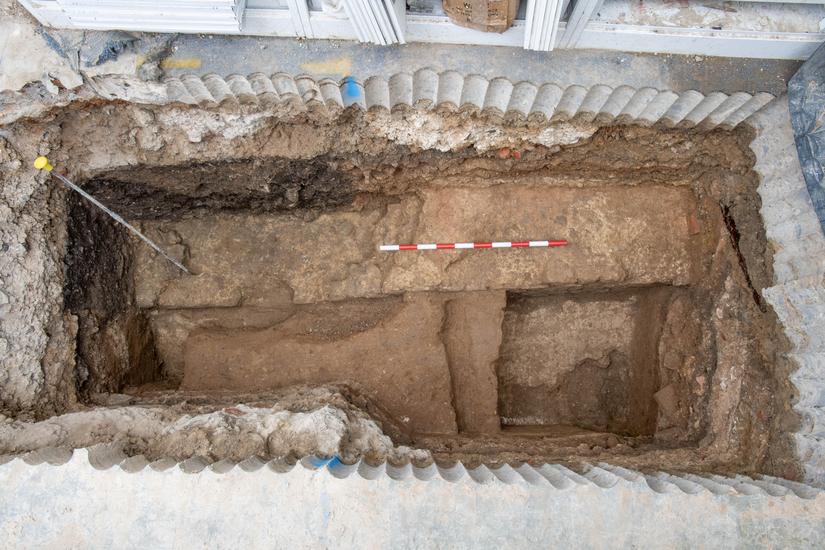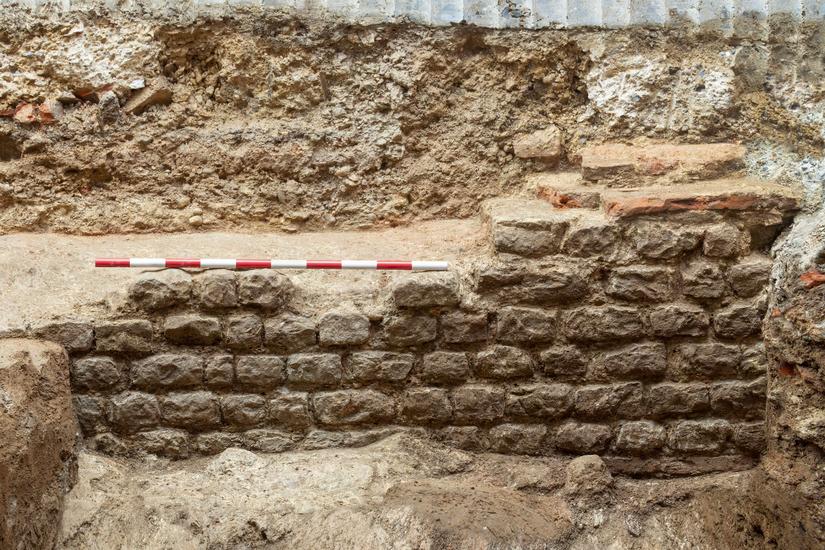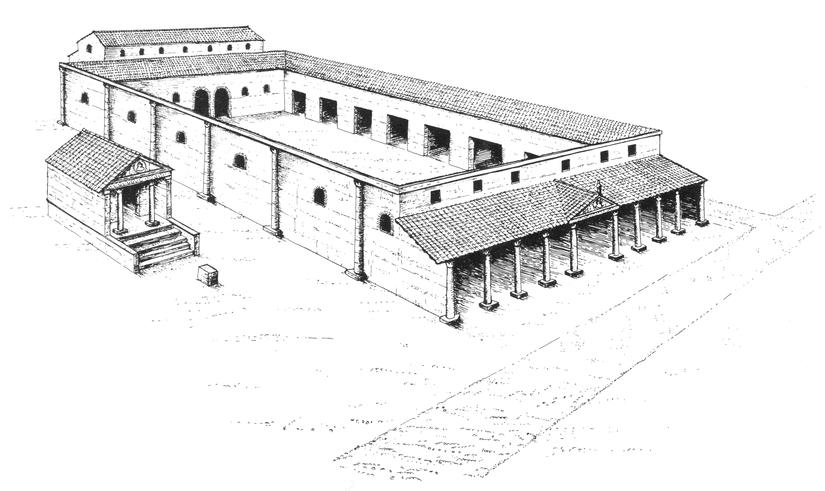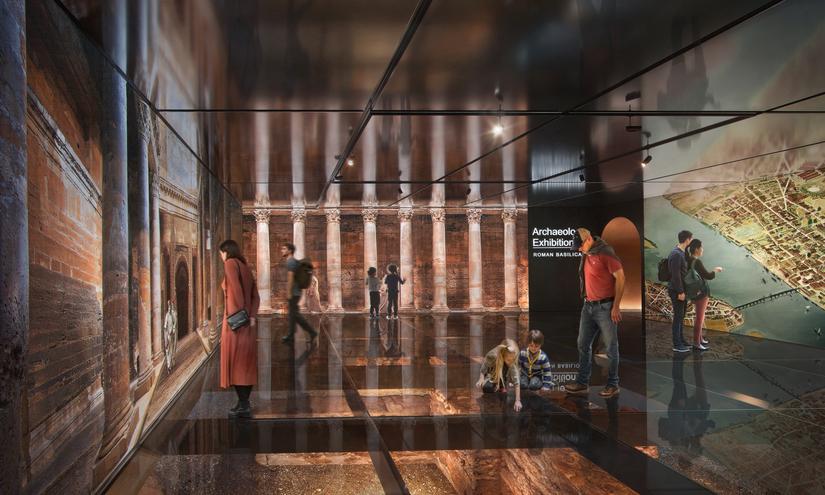Uncovering the heart of Roman London
We’ve recently been working in the basement of 85 Gracechurch Street - a commercial building next to Leadenhall Market in the City of London. Through decades of research and previous excavations, we already knew this site stood above the northern end of the first Roman Basilica. However, nothing could have prepared us for what we would find when the site owners, Hertshten Properties, asked us to launch new investigations ahead of a planned redevelopment…
The search for the Basilica
Whilst we knew the Basilica may lie beneath this site, it was difficult to predict how much of the structure – if any - survived. It was likely any remains would have been disturbed by both later Roman and more recent construction. To see what levels of preservation might be present, we dug a number of test pits (small archaeological trenches), strategically placed where we thought walls and foundations might be present.

What we revealed was extraordinary. Within the test pits were massive foundations and walls made of flint, ragstone, and Roman tile – in some areas we believe these are over 10m long, 1m wide, and 4m deep. It was clear significant parts of the Basilica still lay beneath 85 Gracechurch Street!

What makes this discovery even more special is the fact we believe these foundations are within an area of the Basilica known as the Tribunal. Here, upon a raised stage, magistrates, political leaders, and important officials would have made major decisions about the government of London and possibly beyond, shaping the City’s past and present. 2,000 years ago this spot was the heart of Roman London.
The first London Forum
So, what is a Basilica?
The Basilica was part of the wider Roman Forum and served as the political, judicial, commercial, and social hub for Londinium residents and visitors. Archaeologists and historians believe it was built during the late 70s or 80s AD during the Governorship of Agricola (78-84 AD). Located on a high point in the city and built on a raised platform, it spanned an area roughly the size of a football pitch.
This was a clear symbol of Roman power and authority, further emphasised by the fact the Basilica is likely to have risen over two storeys. In front of the Basilica was an open courtyard, where locals and visitors frequented and engaged in public and community activities, such as markets, festivals, and major public announcements.

Interestingly, the first Roman Forum was only in use for a relatively short period. Construction began on a much larger second forum, immediately around the first, around 20 years later. This was almost 5 times as large - in fact, its courtyard would have been around the same size as Trafalgar Square and may have reflected the rapid growth and importance of Britannia at the time. Much of the first Forum remained in use until the second Forum was completed, but it was then demolished. Consequently, we know little about what the interior of the first Basilica may have looked like. We hope that through further excavations at Gracechurch Street, we may uncover clues to its appearance.
“This is one of the most significant discoveries made in the City in recent years. It's like discovering the Speaker’s Chair and chamber of the House of Commons, 2,000 years into the future. The levels of preservation of the Basilica have far exceeded our expectations, and we have possibly the most important part of the building. Excitingly, we’ve only just scratched the surface of this site’s potential through our initial investigations. We look forward to discovering more about these remains, working with the site owners, London Museum, and City of London Corporation to develop a truly unique and captivating archaeological experience and public space.”
- Sophie Jackson, MOLA Director of Development
Standing on the stage of Roman London
As one of the most historically significant pieces of Roman history uncovered in the City of London, Hertshten Properties intends to integrate the surviving remains into the updated plans for 85 Gracechurch Street. We’ve been working with the site owners and project team (Shaw Corporation, Gardiner and Theobold, and Woods Bagot architects), to develop proposals for a new public exhibition, event space, and immersive experience, in partnership with London Museum.

This will offer visitors a unique opportunity to experience what it would have been like to stand on the stage of early Roman London, whilst telling the story of the development of the City through time. An updated planning application incorporating the new space into 85 Gracechurch Street is expected to be submitted in spring 2025. If approved, full excavations on the site will take place, which may reveal further details on the construction and interior of the Basilica. The new experience is expected to be open to visitors from 2029/2030.